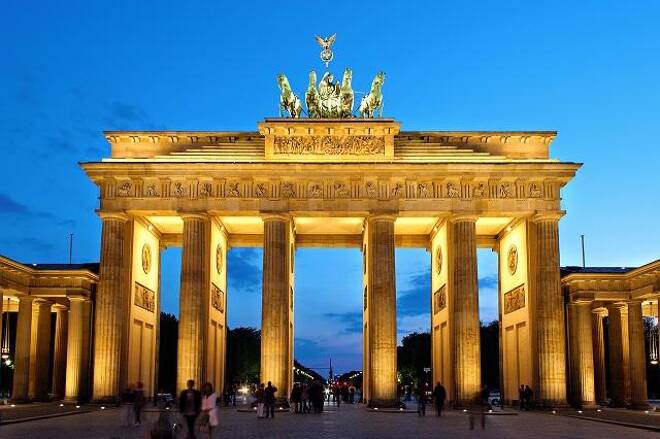Advertisement
Advertisement
Germany Economy Shows Third Quarter Moderate Growth
By:
Official figures have revealed that the German GDP rose by 0.3% between June and September, as growth slowed down by 0.1% from the second quarter. The
Official figures have revealed that the German GDP rose by 0.3% between June and September, as growth slowed down by 0.1% from the second quarter.
The main drivers of the temperate growth was domestic and government consumption.
In contrast, the level of fixed capital formation decreased slightly for the third quarter.
Foreign trade was also calculated to have a downward effect on growth, as the increase in imports was markedly higher than that of German export markets.
Year on year, there was a more positive comparison, as the price adjusted GDP was higher by 1.8%. This follows a 1.6% increase in the second quarter and a 1.2% increase in the first quarter of 2015.
Employment has also increased by 343,000, or 0.8% from a year ago, leaving 43.2 million citizens now working. The jobs data was similar to the encouraging news on employment, released by the UK this week.
Industrial Production Down by 0.3% in Euro Area
There was more downbeat news from Eurostat, as they revealed that for September this year, industrial production had been reduced by 0.3%.
The European Union also suffered an industrial downturn, but this was slightly less than the euro area on 0.1%.
Despite the disappointing results, it was still better performance than what was recorded for August. The euro area’s production was down by 0.4%, and the European Union industrial activity fell by 0.2%.
There was better news with the year on year September comparison , as industrial production increased by 1.7% in the euro area and by 1.8% in the European Union.
Durable Consumer Goods Fall Responsible for Decrease
Industrial progress was mainly effected by a downturn in durable consumer goods, which fell by a significant 3.9%.
This was compounded by the figures for non-durable consumer goods, which fell by 1%, followed by productivity reductions in capital goods by 0.3%, and energy which decreased by 1.2%.
The production of immediate goods, a service that is used in the ongoing finalisation of a product, remained stable.
Across the European Union the pattern was similar, as the 0.1% decrease was mainly caused by an 2.5% drop in the production of durable consumer goods.
Non durable consumer goods also tumbled by 0.6%, and energy plunged by 0.2%.
However this revealed a clear difference to how much energy was being produced in the euro area itself, compared to the European Union.
There was better news in the European Union for capital and intermediate goods, which both increased by 0.1%.
Amongst the member states, Ireland suffered the worst downturn, as the industrial sector plummeted by 2.4%. Other poor performers included Lithuania on minus 2.3%, and Greece who reported a fall of 1.9%.
Croatia can celebrate the most impressive figure, with an industrial output increase of 5.9%. Hungary also reported a positive 2.9% increase.
The Czech Republic and Slovakia also recorded higher output by 2.6% and 2.2% respectively.
Euro Rises and Falls Against the US Dollar and UK Pound
The euro rose to 1.082 to the dollar last night, despite the release of the industrial production figures. Eventually the euro steadily declined to 1.07 by the midway point this morning.
Many analysts believe that an interest rate rise in the United States is on the way next month.
Against the pound, the euro again rose to 0.711, before falling to 0.707, this was after the pound gained to create downward pressure on the euro to the near 0.706 mark.
About the Author
Peter Tabernerauthor
Did you find this article useful?
Latest news and analysis
Advertisement
